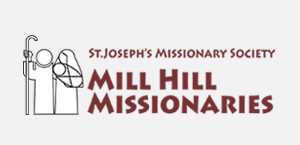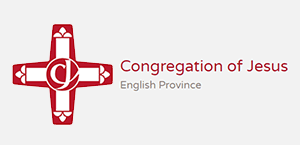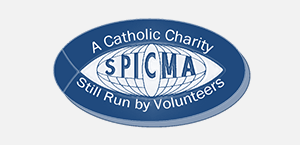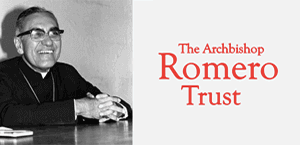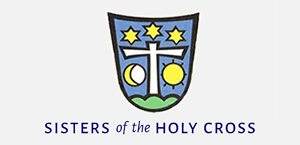St Armel and St Roch
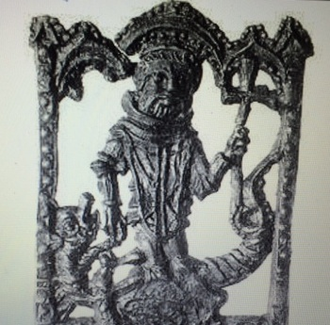
Abbot. One of the patron saints of hospitals, St Armel was invoked to cure headaches, fever, colic, gout and rheumatism. He was born in South Wales in the 6th century and was the cousin of St Samson and St Cadfan. After becoming a monk, he emigrated with many kinsmen to Brittany where he founded two monasteries: Plouarmel and Ploermel.
The earliest records of a cult around him are 12th century. There is a statue of him in Westminster Abbey which was placed there by Henry VII. The king believed he survived a shipwreck off the coast of Brittany through the intercession of the saint. There is also one on Cardinal Morton's tomb in Canterbury Cathedral. Other examples survive in the painted reredos of Romsey Abbey, alabasters at Stonyhurst College in Lancashire and in St Mary Brookfield church in London.
St Armel is generally depicted in armour and chasuble, leading a dragon with a stole round its neck. This recalls the legend that he took a dragon to Mont-Saint- Armel and persuaded it to dive into the river below.
In Ploermel church in France, there are several fine 16th century stained glass windows depicting scenes from his life.
and St Roch
Today is also the feast day of St Roch.
Born in Montpellier in the 14th century St Roch, (Rocco in Italian) this popular medieval saint is patron saint of dogs, invalids, falsely accused people, bachelors, and several other things.
After his wealthy parents died, when he was 20, he gave away all his worldly goods to the poor, entered the Franciscan Third Order, and set out as a mendicant pilgrim for Rome, although his father on his deathbed had designated him governor of Montpellier.
Arriving in northern Italy, he stayed to help care for victims of the plague.in the public hospitals at Acquapendente, Cesena, Rimini, Novara and Rome. He is said to have effected many miraculous cures by prayer and the sign of the cross and the touch of his hand. Eventually he became ill himself, According to legend, he was looked after by a dog in the forest who brought him bread and licked the sore on his thigh, and survived.
On his return to Montpellier, illness had so changed his appearance that he was not recognised and thrown into prison as an imposter, still accompanied by his dog. He died on 16 August 1327, without revealing his name. The townspeople recognised him and he was immediately venerated as a saint. His body was removed to Venice by the Venetians and he became one of the saints invoked against the plague.
He is usually depicted in art wearing pilgrim's robes, with a scallop-shell badge and a staff, his hose drawn back to show the plague scar on his thigh.
He was canonized by popular fervour; added to the Roman Martyrology by Pope Gregory XI in 1590.
He is the patron saint of Dolo, near Venice and Parma, as well as Casamassima, Cisterna di Latina and Palagiano in Italy. He is also patron saint of the towns of Arboleas and Albanchez, in southern Spain, and Deba, in the Basque Country - and St Roch Football Club in Glasgow.
St Roch received renewed attention and veneration during the COVID-19 pandemic.



